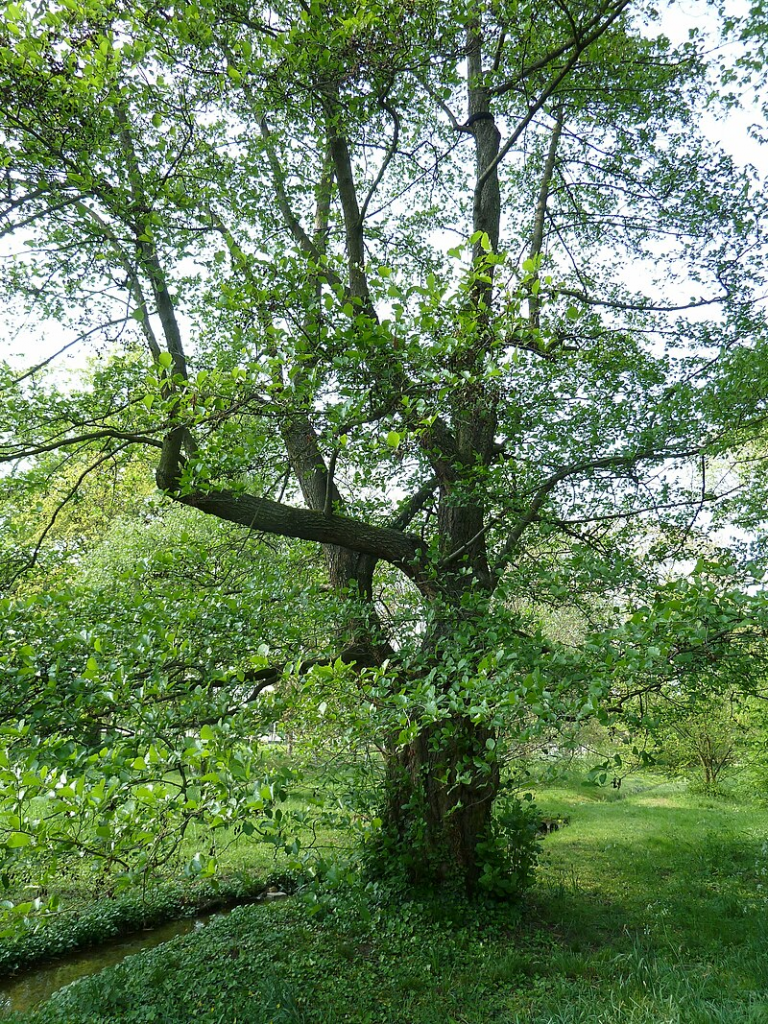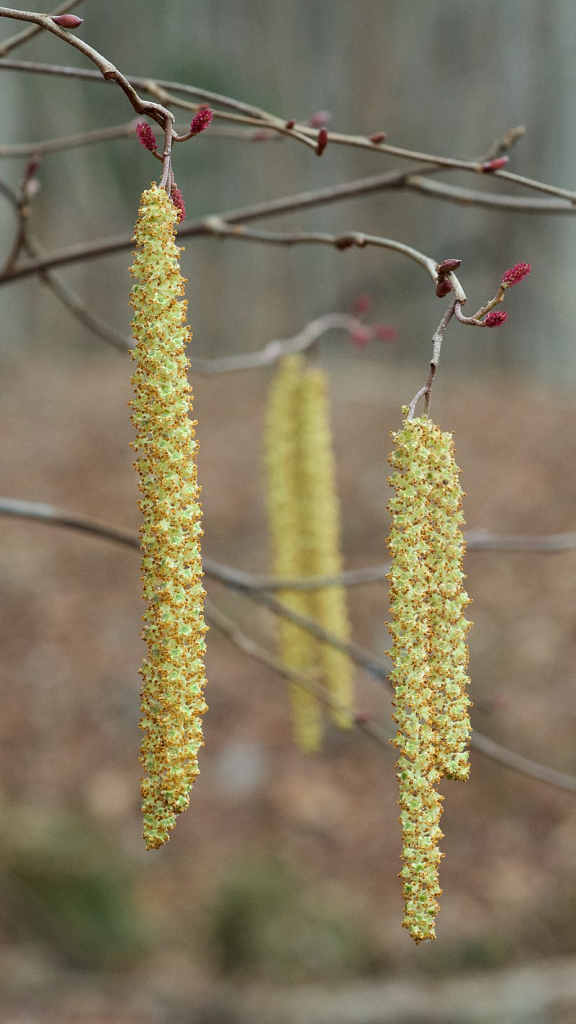
Also known as tag alder, brookside alder, and hazel alder, this deciduous shrub or small tree is native to eastern North America from Nova Scotia and southern New Brunswick south to northern Florida and eastern Texas where it grows in wet soils such as streambanks, riversides, and swamps. It is a member of the birch family, Betulaceae that also includes hazels and hornbeams. The plant grows 10-20′ tall and is multi-stemmed with a densely branched crown and a pyramidal form. It suckers and may for thickets. The alternate leaves are 2-5″ long, obovate to broadly elliptic, and have pointed tips, wedge-shaped bases, and finely serrated margins. They are medium to dark green above and pale green below. In late spring, male and female catkins of flowers appear on the same tree. The male catkins are 2-4″ long, yellow in color, and occur in dropping clusters of 2-5 near the tips of the branches. The female catkins are 1/4″ long, red or purple, and occur in erect clusters of 2-5 at the tips of the twigs. They are wind pollinated and give way to cone-like structures about ½-¾” long, with dark brown woody scales that persist into winter. The cones contain nutlets that provide food for insect larvae, birds, and mammals. Smooth alder is valued for erosion control along water features and is a good choice for the wet soils of naturalized areas, ponds and streams borders, as well as for native plant, bog and rain gardens. The genus name, Alnus, is the classical Latin name for the plant. The specific epithet, serrulata, is from the Latin word serratus meaning notched and refers to the toothed margins of the leaves. Photo Credit Aroche, Wikimedia Commons

Type: Deciduous shrub or small tree
Outstanding Features: Catkins; tolerance of wet soil; shelter and food to wildlife
Form: Pyramidal
Growth Rate: Rapid
Bloom: Clusters of yellow male and red to purple female catkins in spring
Size:10-20’H x 8-15′ W
Light: Sun to part shade

Soil: Average, moist to occasionally wet; tolerates poor soil and seasonal flooding; nitrogen fixing
Hardiness: Zones 4-9
Care: Remove suckers to limit spread
Pests and Diseases: Susceptible to canker, powdery mildew, leaf curl, aphids, leaf miners, tent caterpillars, lace bugs and flea beetles.
Propagation: Seed
Photo Credit: Top Eric Hunt, Wikimedia Commons; bottom Maksim, Wikimedia Commons